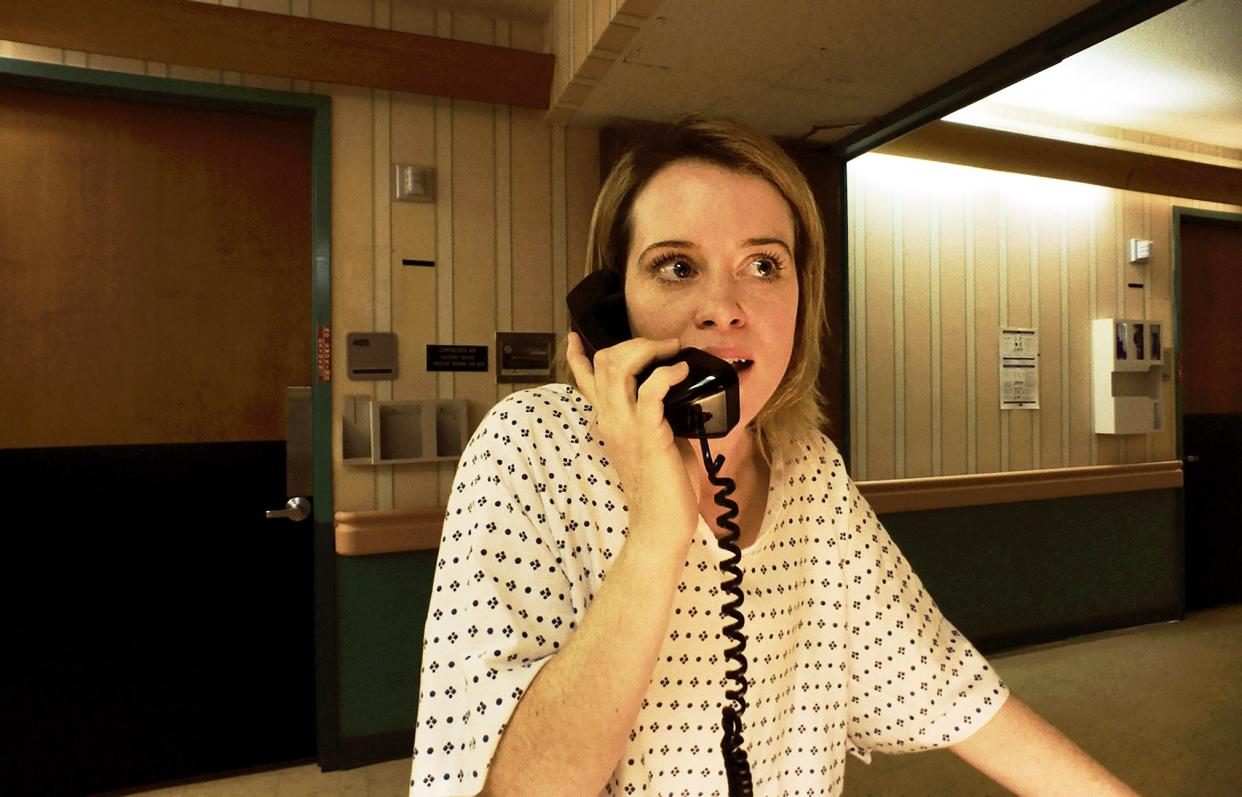Unsane Review: A Horror Movie About What It’s Like to Be a Woman

It’s been a few years since Steven Soderbergh announced he was retiring from filmmaking, grandly announcing that "movies don’t matter anymore." And it’s been less than a year since Steven Soderbergh un-retired from filmmaking with the underappreciated crime thriller Logan Lucky.
His second post-retirement film—a nasty thriller called Unsane—arrives today. But while it’s easy to poke fun at Soderbergh for his temperamental attitude about movies, he’s clearly still playing around with what "filmmaking" even means in 2018. Unsane finds him eagerly throwing out most of the pomp and circumstance that traditionally surrounds the release of a new movie. Unsane only exists because Soderbergh told screenwriter James Greer he was looking for a low-budget thriller to shoot over the summer. It was clearly a no-frills, quick-and-dirty project. Soderbergh claims he shot almost the whole thing on an iPhone 7 Plus.
That sense of breaking new ground also extends to Unsane’s star, Claire Foy, clearly relishing the chance to flex a different muscle than the ones required for her roles in the British costume dramas Wolf Hall and The Crown. She plays Sawyer, a young American woman attempting to rebuild her life after a harrowing encounter with a stalker. When Sawyer attends a counseling session and confesses to the occasional suicidal thought, her therapist has her committed on the spot, arguing that she might "pose a threat to herself or others." Not for the first time in his career, Soderbergh turns his scathing eye toward the American healthcare system. We quickly learn the mental hospital will make a hefty profit for Sawyer’s involuntary commitment—regardless of whether she actually needs to be committed.
For most of its runtime, Unsane is a nerve-jangling modern-day Kafka story, as Sawyer and her horrified mother (Amy Irving) crash up against an indifferent bureaucracy designed to keep people like Sawyer locked up. Complaining that she’s been locked up by mistake just makes people think she’s in denial. When she’s threatened or assaulted by the other patients, she fights back, which entrenches the idea that she can’t be trusted in day-to-day life. And outbursts are treated with an ever-evolving cocktail of pills, with side effects that create new symptoms for the doctors to identify and treat with… more therapy and pills. When she finally wrangles the head doctor into a one-on-one consultation, she pleads for release: "Look at me." But even if the doctor could diagnose her brain just by looking into her eyes, he’s too distracted to care.
That’s a pretty horrifying scenario in itself. But Unsane adds an extra, Hitchcockian wrinkle to Sawyer’s dilemma. Shortly after being committed, Sawyer becomes convinced that one member of the medical staff (Joshua Leonard) is actually her old stalker, having followed her to Pennsylvania, assumed a false name, and weaseled his way into a staff job. Is she right? Or is her ever-increasing paranoia a sign that her involuntary commitment might be necessary after all?
The question of whether or not Sawyer is a reliable narrator is Unsane’s biggest hook—but the plottier the movie gets, the less insightful and interesting it becomes. There’s a big, twisty thriller story at the heart of it all, and I certainly won’t spoil where the movie goes from here. But Unsane’s sharpest moments are on the margins of the narrative, where it the creepy little double entendres and microaggressions the female characters are forced to endure every day: a sneering joke about putting some cream in the coffee, or a wink-y invitation to join a boss on a business trip to New Orleans (with the iPhone’s fisheye camera lens enlarging the man’s prominent wedding ring until it’s approximately the size of a Macy’s Thanksgiving balloon).
As we learn more about Sawyer’s old stalker—who bears an uncanny resemblance, both physically and in personality, to Robert from Kristen Roupenian’s viral New Yorker story "Cat Person"—we’re invited to contemplate why Sawyer might have been driven to the brink of madness. In flashback, we see an expert gives Sawyer a list of practical tactics for living with a stalker: Only park on well-lit public streets, always keep your keys held like little daggers in your fists, make sure your friends’ social media posts don’t give too much information about your whereabouts.
The expert’s advice is essentially a textbook for living life as a paranoiac, always keeping a little piece of your brain alert in case some horrifying danger waits around the corner. It’s also, my female friends have repeatedly told me, fairly standard procedure for existing as a woman in 2018. At the screening I attended, the men in the audience watched this scene in uncomfortable silence; the women burst into cathartic laughter. It was—as the movie’s best moments continually demonstrate—a reminder that society expects women to uncomplainingly endure these horrors every day.
Should you see it?
Yes. The third act is a mess, but the rest is too compelling—and too painful—to be ignored.

